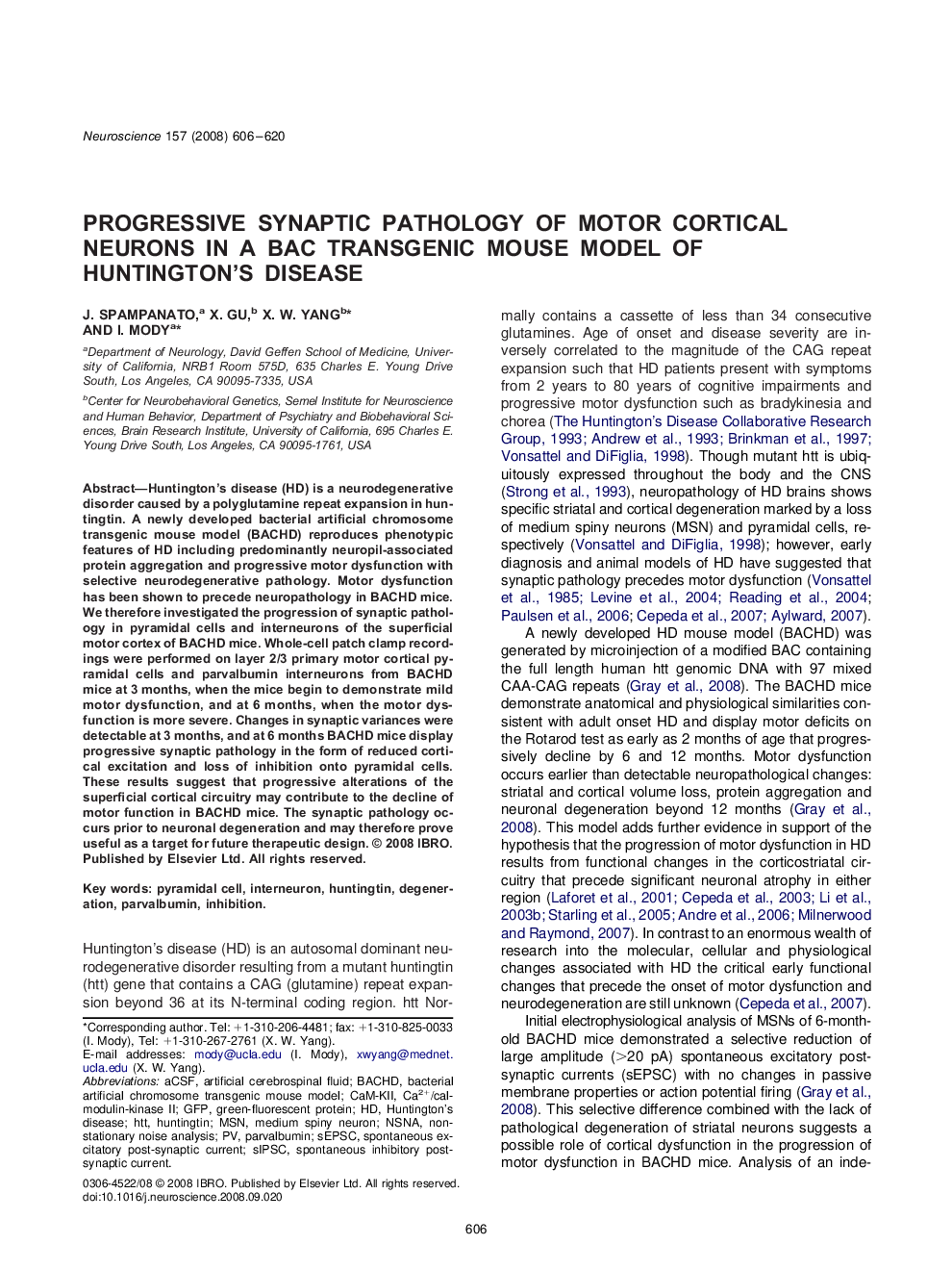| Article ID | Journal | Published Year | Pages | File Type |
|---|---|---|---|---|
| 6278009 | Neuroscience | 2008 | 15 Pages |
Abstract
Huntington's disease (HD) is a neurodegenerative disorder caused by a polyglutamine repeat expansion in huntingtin. A newly developed bacterial artificial chromosome transgenic mouse model (BACHD) reproduces phenotypic features of HD including predominantly neuropil-associated protein aggregation and progressive motor dysfunction with selective neurodegenerative pathology. Motor dysfunction has been shown to precede neuropathology in BACHD mice. We therefore investigated the progression of synaptic pathology in pyramidal cells and interneurons of the superficial motor cortex of BACHD mice. Whole-cell patch clamp recordings were performed on layer 2/3 primary motor cortical pyramidal cells and parvalbumin interneurons from BACHD mice at 3 months, when the mice begin to demonstrate mild motor dysfunction, and at 6 months, when the motor dysfunction is more severe. Changes in synaptic variances were detectable at 3 months, and at 6 months BACHD mice display progressive synaptic pathology in the form of reduced cortical excitation and loss of inhibition onto pyramidal cells. These results suggest that progressive alterations of the superficial cortical circuitry may contribute to the decline of motor function in BACHD mice. The synaptic pathology occurs prior to neuronal degeneration and may therefore prove useful as a target for future therapeutic design.
Keywords
Related Topics
Life Sciences
Neuroscience
Neuroscience (General)
Authors
J. Spampanato, X. Gu, X.W. Yang, I. Mody,
